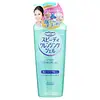What's inside
What's inside
 Key Ingredients
Key Ingredients

No key ingredients
 Benefits
Benefits

 Concerns
Concerns

No concerns
 Ingredients Side-by-side
Ingredients Side-by-side

Talc
AbrasiveSodium Cocoyl Isethionate
CleansingSodium Myristoyl Glutamate
CleansingSodium C14-16 Olefin Sulfonate
CleansingPotassium Laurate
EmulsifyingSodium Lauroyl Glutamate
Carrageenan
Methicone
EmollientIsostearyl Alcohol
EmollientBHT
AntioxidantMoroccan Lava Clay
AbrasiveDipropylene Glycol
HumectantSilk
Ethyl Glucoside
HumectantLactic Acid
BufferingSodium Hyaluronate
HumectantPotassium Hydroxide
BufferingProtease
ExfoliatingLipase
Skin ConditioningMethylparaben
PreservativeIron Oxides
Talc, Sodium Cocoyl Isethionate, Sodium Myristoyl Glutamate, Sodium C14-16 Olefin Sulfonate, Potassium Laurate, Sodium Lauroyl Glutamate, Carrageenan, Methicone, Isostearyl Alcohol, BHT, Moroccan Lava Clay, Dipropylene Glycol, Silk, Ethyl Glucoside, Lactic Acid, Sodium Hyaluronate, Potassium Hydroxide, Protease, Lipase, Methylparaben, Iron Oxides
Ingredients Explained
These ingredients are found in both products.
Ingredients higher up in an ingredient list are typically present in a larger amount.
Dipropylene Glycol is a synthetically created humectant, stabilizer, and solvent.
This ingredient helps:
Dipropylene glycol is technically an alcohol, but it belongs to the glycol family (often considered part of the ‘good’ alcohols). This means it is hydrating and gentle on skin unlike drying solvent alcohols like denatured alcohol.
As a masking agent, Dipropylene Glycol can be used to cover the smell of other ingredients. However, it does not have a scent.
Studies show Dipropylene Glycol is considered safe to use in skincare.
Learn more about Dipropylene Glycol